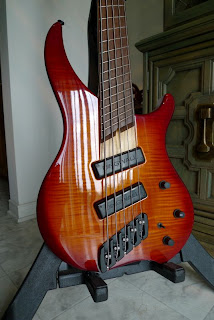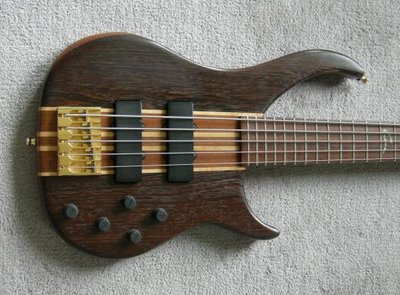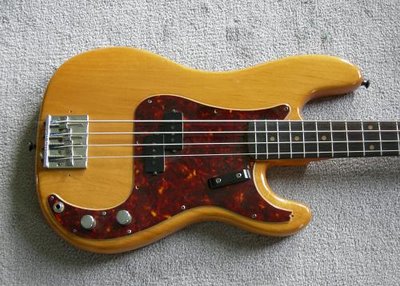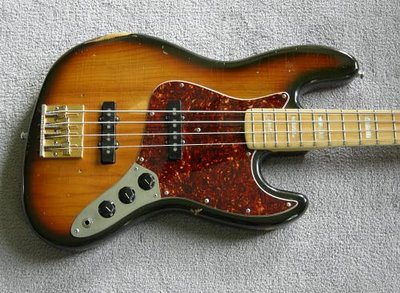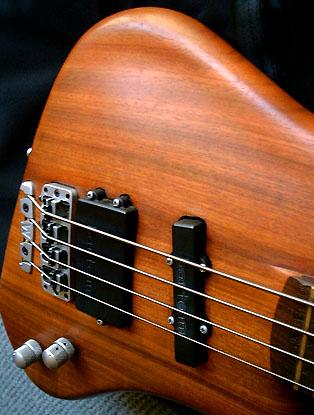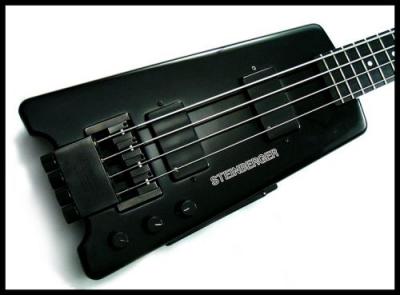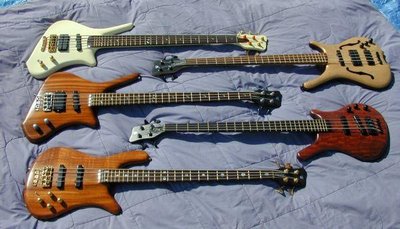1990 Warwick Streamer (Stage II style)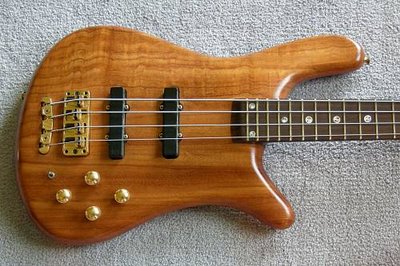
This lovely instrument was handbuilt by Warwick in 1990. I purchased this instrument from a fellow who, as a boy, had grown up on the Wilfer estate in West Germany where his mother worked as the personal cook for Frau Wilfer. The Wilfers founded Framus and later on Warwick, and son Hans Peter runs the Warwick business.
When this young fellow (Ned) had grown and was going to college, he took up bassplaying as a passtime. Having saved enough for a decent instrument he made a trip back to the estate. Hans Peter recognized Ned right away and while he did accept the money (likely less than was needed for the purchase), Hans Peter handpicked this particular top-of-the-line model for his childhood friend. Here are the details:
Warwick Streamer Stage IIAfzelia body
Wenge neck & fretboard with afzelia stringers
Inlaid yin-yang fret markers
Neck-through model
Green LED side-markers
34" scale
hand-rubbed oil finish
MEC 9-volt 2-band preamp
MEC JJ pickups
All hardware is gold-plated
Weight roughly 9 pounds
Condition: excellent, with one small mark below the toggle switch
Handmade in West Germany, 1990
Accessories: gigbag, neck wrench, wax
This bass has a unique speaking voice, with the typical Warwick growling mids, a bright and slightly aggressive high end response and warm woody lows. While this sound is a general characteristic of the Streamer Stage II basses, it is particularly sweet on this instrument and I consider myself very lucky to own this bass.
 Currently I am playing Dingwall basses, built in Saskatoon, Saskatchewan, Canada by Sheldon Dingwall and his talented crew. These instruments feature the Novax fanned fret system and varying string lengths to deliver a consistent tone across the entire fretboard.
Currently I am playing Dingwall basses, built in Saskatoon, Saskatchewan, Canada by Sheldon Dingwall and his talented crew. These instruments feature the Novax fanned fret system and varying string lengths to deliver a consistent tone across the entire fretboard.







